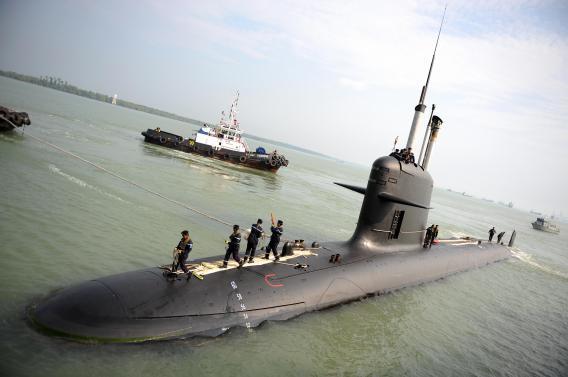If you’re like me, you spend a lot of time wondering what it would be like to live beneath the waves in a tiny submarine filled with illegal drugs. “Cramped and stressful,” apparently, according to a great new article in High Times magazine about drug trafficking on the high seas. In their tireless quest to find stealthier and more efficient ways of bringing their products to market, South American drug barons have taken to using small, semi-submersible vessels that glide through the ocean carrying a skeleton crew and thousands of pounds’ worth of cocaine.
This isn’t Das Boot we’re talking about, though. While some cartels do use regulation-sized submarines, cheaper mini-subs still dominate the trade. These subs have been around since the 1990s, and they’re effective but hazardous. As Craig Stephens wrote in the High Times piece, not only are these fiberglass torpedoes tiny and slow, but “crew members also have to deal with the risk of malfunctioning machinery, toxic fumes and the possibility of sinking, in addition to the obvious danger of being caught by the authorities.” Plus, there’s the age-old dilemma of water, water everywhere, and not a drop to drink.
Sounds pretty awful, right? Yes, but consider the alternative. Stephens found that “the poor souls manning these vessels are often little more than virtual slaves who have been sent on a suicide mission by the crime syndicate in question in order to work off a debt or some other grievance.” But the risk is not without its reward: If all goes well, submarine operators can earn up to $1,500 per voyage, which is a lot of money for two days’ work.
I’ve always been fascinated by the logistics of the international drug trade. The various cartel leaders might be criminals, yes, but they are also businessmen whose profit margins depend on the efficiency of their supply chains. And so there’s great pressure to come up with novel and effective modes of transportation—like these weird and scary little submarines; like the drug tunnels underneath the border between the United States and Mexico. Another big part of having an efficient supply chain is incentivizing your employees to be good at their jobs. There’s more on this in the High Times story, including brief interviews with three actual submarine crewmembers, who explain that fear isn’t the only reason why they do what they do. Give it a read.
Crime is Slate’s crime blog. Like us on Facebook, and follow us on Twitter @slatecrime.
